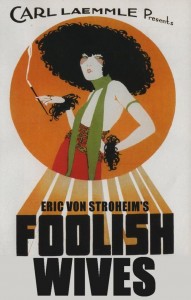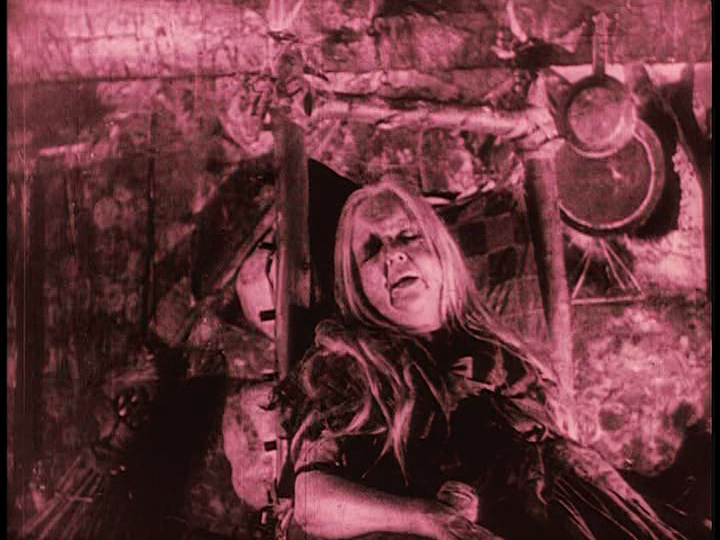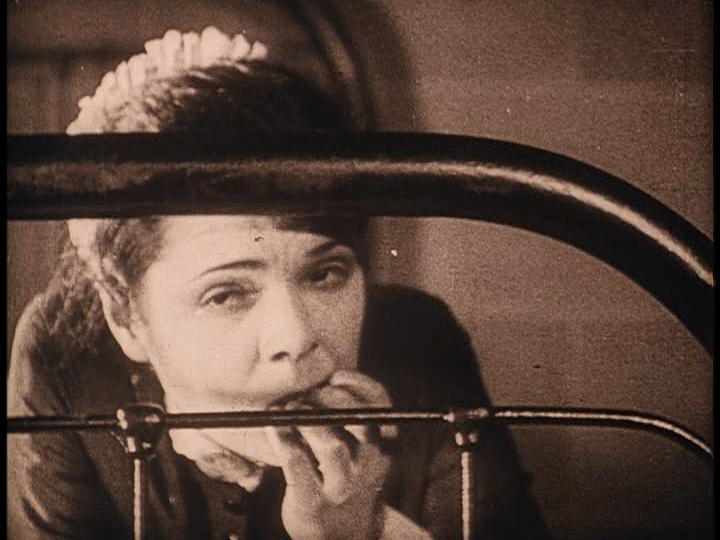|

Synopsis:
A con-artist (Erich von Stroheim) posing as a count in Monte Carlo attempts to seduce the wealthy, neglected wife (Miss DuPont) of an American envoy (Rudolph Christians) while continuing a duplicitous affair with his jealous housemaid (Dale Fuller), and trying to bed the “half-witted” daughter (Malvina Polo) of a counterfeiter (Cesare Gravina).
|
|
Genres, Themes, Actors, and Directors:
- Con-Artists
- Erich von Stroheim Films
- Mistaken Identities
- Silent Films
Review:
The production history of this extravagantly produced long-con flick by writer/director Erich von Stroheim — whose original budget of $250K skyrocketed to over $1 million, and whose initial cut ran for no less than 6 hours — is legendary, though it was merely the first in a series of several creatively thwarted films (followed by Greed, The Wedding March, and Queen Kelly) that led to von Stroheim’s downfall as a director. As viewed in its recently restored version (running approximately 2 1/2 hours long), it’s obvious that narrative strands are missing and/or truncated; however, most of it coheres quite well, thanks to a relatively straightforward storyline featuring an unambiguously evil central character, played with perverse glee by von Stroheim himself (known by audiences at the time as “The Man You Love to Hate”). Indeed, von Stroheim’s Count Karamzin remains one of cinema’s most dastardly protagonists — a psychopathic conman and sexual predator who lies and cheats with astonishing agility.
In the film’s most disturbing sequence, he’s interrupted just as he’s about to rape the unconscious DuPont; for an agonizingly long stretch, we watch him sitting in a chair nearby DuPont, visibly irritated as the cabin’s recently-arrived caretakers prevent him from carrying out his plan. Later in the film, a von Stroheim-favorite — the expressively distinctive Dale Fuller, playing his love-struck, deceived mistress — becomes a key player in the story, helping to move the film towards its relatively satisfying (though terribly truncated) ending. Despite its sorry-looking physical state — much of the recent restoration remains patchy-looking at best, unfortunately — Foolish Wives should be seen by all film fanatics as prime evidence of von Stroheim at his most unrepentantly reprehensible (as a character) and extravagant (as a director).
Redeeming Qualities and Moments:
- Fine direction by von Stroheim



- Dale Fuller as Maruschka

Must See?
Yes, as one of von Stroheim’s earliest successes — and as a prime example of the iconoclastic director at his vilest (character-wise, that is). Listed as a Personal Recommendation in the back of Peary’s book.
Categories
- Historically Relevant
- Important Director
(Listed in 1001 Movies You Must See Before You Die)
Links:
|





One thought on “Foolish Wives (1922)”
First (and, no doubt, last) viewing. In my opinion, not must-see – but those who have a strong interest in cinema history may differ.
Given the rather encouraging assessment above, I looked forward (a bit) to seeing this. I was ultimately overwhelmed by how dull it is. Things don’t really start off well – since it takes a good twenty minutes for the narrative action to kick in – but, once there’s a bit of thrust, what we’re subjected to is almost painfully listless. I’ve seen other silent films from around this time that have remained compelling.
..And this thing was intended to be at least 6 hours?! Good Lord – yikes! – and WHY?!! Was there going to be more of the existing storyline?, or were we going to see a line of women systematically used and tossed aside by von Stroheim’s rather uninteresting and superficially drawn roue? Either way, it’s difficult imagining a plus-factor, considering that the salvaged cut of the film is unremarkable.
Even though it’s a silent film, there is still an astonishingly small amount of dialogue. The idea, I suppose, is that the audience is intended to be enthralled by von Stroheim’s cinematic presence – since he is showcased above others in the cast. (Fuller gets one short sequence near the end in which she is allowed to shine; Christians – who died during production – turns out to be one of the most interesting characters, but we see very little of him.)
In the last 20 minutes, the film becomes quite dramatic due to Fuller’s revenge. This revenge sequence is, admittedly, shot and edited well. But it’s all still too little, too late – since…personally, anyway, I did not feel invested in what was going on. Still, the film – which probably fed into particular audience interests at the time – was very popular in its day. Go fig.